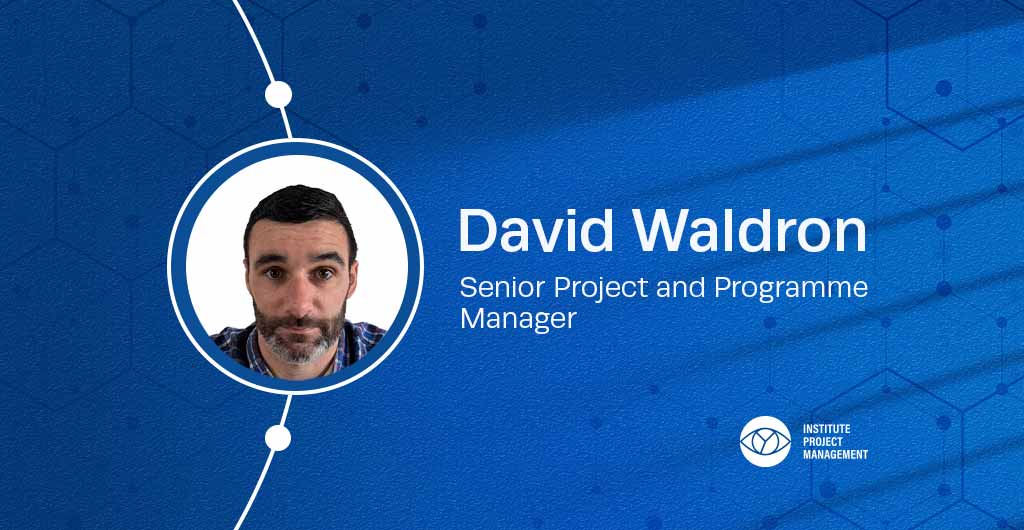Introduction
What is Project Closure?
Project closure is the final phase in the project management lifecycle, where all activities are completed, and the project is formally concluded. It involves finalising deliverables, obtaining acceptance from stakeholders, releasing resources, and reflecting on the project’s success and challenges. In this phase the project managers makes sure that all loose ends are tied up and that the team is able to transition out of the project in an orderly manner.
The Importance of Proper Project Closure
Proper project closure is essential for ensuring that the project meets its objectives and that all stakeholders are satisfied with the outcomes. It offers a clear endpoint to the project, which facilitates a smooth handover, ensures accountability, and allows for valuable lessons to be learned. Moreover, it helps the team and organisation gain insight into what went well and what could have been improved.
Benefits of a Well-Executed Closing Phase
A well-executed project closure provides several key benefits:
- Ensures stakeholder satisfaction by confirming that deliverables meet expectations.
- Facilitates continuous improvement by identifying lessons learned.
- Releases resources efficiently, allowing teams to focus on new projects.
- Strengthens relationships with stakeholders through effective communication and transparency.
- Provides final documentation, which can be valuable for future reference or audits.
Objectives of Project Closure
Finalising Deliverables
One of the primary objectives of project closure is ensuring that all deliverables are completed, meet the required quality standards, and have been handed over to the relevant stakeholders. This includes ensuring that any remaining work is completed, and that the project outputs are aligned with the original objectives and specifications.
Evaluating Project Success
Evaluating the success of the project involves assessing whether the project met its objectives, stayed within the agreed-upon scope, was completed on time, and adhered to the budget. A thorough evaluation considers both the tangible outcomes, such as deliverables, and intangible factors, such as team satisfaction and stakeholder engagement.
Facilitating Knowledge Transfer
Project closure also involves transferring knowledge gained during the project to relevant parties. This may include passing on insights, processes, and documentation that will benefit future projects or departments. Knowledge transfer ensures that valuable experiences are retained within the organisation and can be leveraged in the future.
Key Activities During Project Closure
Preparing for Closure
Proper preparation is critical for a successful project closure. This involves reviewing the project’s current status, confirming that all tasks are complete, and ensuring that there are no pending issues. Effective preparation includes setting the right expectations and defining clear criteria for project completion.
Planned Closure vs. Premature Closure
Planned closure is a systematic process where the project team follows a structured approach to close the project. In contrast, premature closure occurs when the project is shut down without completing all necessary activities, which may lead to unfinished work, unresolved issues, or stakeholder dissatisfaction.
Conducting a Final Project Evaluation
A thorough final evaluation helps to determine whether the project met its objectives and highlights areas for improvement. It is essential to assess both the successes and challenges to provide a balanced view.
Reviewing Goals and Outcomes
In this phase, the project team members review the original goals, the scope, and the outcomes to assess whether all objectives have been met. Any deviations from the initial plan should be identified, along with explanations for why they occurred.
Gathering Stakeholder Feedback
Stakeholder feedback is vital for understanding how well the project met their expectations. This feedback should be collected through surveys, meetings, or informal discussions, providing valuable insights that can inform future projects.
Steps to Successfully Close a Project
Step 1: Confirm Completion of All Deliverables
Before a project can be closed, it is crucial to confirm that all deliverables have been completed and meet the necessary quality standards. This may involve testing, reviews, or audits to ensure that each deliverable is acceptable.
Formal Handover Process
A formal handover process ensures that the deliverables are transferred to the relevant stakeholders or departments, accompanied by all necessary documentation, instructions, and support materials.
Step 2: Review All Contracts and Documentation
The project manager should review all contractual obligations and ensure that the project has met all terms and conditions. Additionally, project documentation, such as contracts, meeting minutes, and reports, should be finalised and stored for future reference.
Step 3: Gain Formal Acceptance from Stakeholders
Formal acceptance involves getting sign-off from the stakeholders that the project has been completed to their satisfaction. This may require documenting acceptance criteria and getting explicit approval from key stakeholders or clients.
Step 4: Release Project Resources
At the end of the project, resources such as team members, equipment, and materials should be released and transitioned to other projects or departments.
Transitioning Team Members
When the project concludes, team members should be transitioned to new projects or roles. This may involve recognising their contributions and providing them with new assignments or opportunities for growth.
Managing Equipment and Tools
All project-related equipment, tools, and materials should be returned or reassigned to other projects. Proper tracking and documentation of resources ensure that nothing is left behind or unaccounted for.
Step 5: Conduct a Post-Mortem
A post-mortem is a critical analysis of the project’s lifecycle, aimed at identifying what went well and what could have been improved.
Identifying Lessons Learned
This involves collecting insights from the project team and stakeholders about the successes and failures encountered during the project. These lessons help the organisation improve its processes and avoid making the same mistakes in future projects.
Documenting Improvement Opportunities
The post-mortem should also document opportunities for improvement in areas such as project management processes, communication strategies, risk management, and resource allocation.
Step 6: Archive Key Project Documentation
All critical project documentation, such as reports, design documents, meeting notes, and communications, should be archived in a central repository for future reference.
Creating a Central Repository
A centralised repository ensures that all project documents are easily accessible to team members or stakeholders who may need to refer to them in the future. This repository is also valuable for auditing purposes.
Step 7: Celebrate Project Achievements
Recognising the team’s efforts and celebrating the project’s achievements is an essential step in project closure. Acknowledging individual contributions boosts morale and fosters a positive work environment, while also helping to build strong team dynamics for future projects.
Managing Challenges in Project Closure
Addressing Unmet Objectives
Not all projects meet all their goals. If there are unmet objectives, it’s essential to understand why they weren’t achieved and to communicate this clearly to stakeholders. This helps to manage expectations and maintain transparency.
Dealing with Stakeholder Disputes
Disputes among stakeholders can arise during the project closure phase. These should be addressed promptly by identifying the underlying issues, facilitating open dialogue, and finding mutually agreeable solutions.
Managing Resource Constraints
Sometimes, resource constraints can delay the project closure phase. Efficient resource management, clear communication, and prioritising critical tasks can help mitigate this challenge.
Tailoring Project Closure to Different Methodologies
PRINCE2 Approach to Closing Projects
PRINCE2, a structured project management methodology, places significant emphasis on project closure. The Closing a Project process ensures that all objectives have been met, that benefits have been realised, and that the project has been formally closed with the correct documentation.
Agile Project Closure Practices
In Agile methodologies, project closure can be less formal but still involves confirming that all deliverables have been completed, conducting a retrospective, and transitioning teams and resources. Agile practices focus on continuous improvement and learning, which makes closure an ongoing part of the iterative process.
Traditional vs. Modern Closure Techniques
Traditional project management often treats closure as a final, one-time event, with a heavy emphasis on documentation and formal approval. In contrast, modern approaches like Agile view closure as a more flexible and iterative process, integrated with ongoing project reviews and feedback loops.
Best Practices for Effective Project Closure
Communicating Clearly with Stakeholders
Clear communication with stakeholders is crucial during project closure. Regular updates, transparent reporting, and managing expectations help ensure that everyone is aligned and that no key issues are overlooked.
Maintaining Transparency in Final Reporting
Transparency is key when reporting on the project’s outcomes. Detailed final reports should highlight successes, challenges, and lessons learned, ensuring that stakeholders are fully informed.
Leveraging Tools and Templates for Documentation
Using templates and project management tools for documentation can streamline the closure process, ensuring that all necessary documents are completed and stored correctly.
Conclusion
Recap of Key Project Closure Steps
Project closure is a structured process that involves confirming the completion of deliverables, conducting evaluations, transferring knowledge, and celebrating achievements. By following these steps, project managers can ensure that projects are successfully concluded and that valuable lessons are captured for future projects.
The Role of Closure in Continuous Improvement
Effective project closure provides an opportunity to learn from successes and failures, driving continuous improvement in project management practices and organisational processes.
Final Thoughts and Recommendations
Project closure is not just the final phase of a project but an essential process for ensuring that all objectives are met, stakeholders are satisfied, and valuable knowledge is preserved for future endeavours. By following best practices and tailoring closure to the project methodology, organisations can enhance their project management capabilities and set themselves up for success in future projects.

Certification OverviewExplore project management certifications and choose the right path for your career.
IPM CertificationFounded in Ireland, IPM is the specialist body in project management.
IPMA CertificationFounded in Switzerland (1965), IPMA is the first global project management association.
PMI CertificationFounded in the US, PMI is recognised worldwide for PMP and CAPM certification.
PRINCE2® CertificationDeveloped in the UK, PRINCE2® is a leading global project management methodology.
About IPM HubThe central hub for project management knowledge, networking, and career growth.

 IPM MembershipBecome an IPM Member to connect with project professionals in Ireland and beyond.
IPM MembershipBecome an IPM Member to connect with project professionals in Ireland and beyond.EMEA Monthly EventsDiscover and attend monthly PM events across the EMEA region.
Mentorship ProgrammeJoin as a mentor or mentee to exchange knowledge and accelerate your career.
IPM Jobs PortalFind the latest project management jobs available across Ireland today.
All Insights & ResourcesDiscover hundreds of articles covering every aspect of project management practice.
Expert InsightsGain practical expertise from industry leaders shaping modern project management.
Ebooks, Templates, and ToolkitsDownload practical toolkits, templates, and guides to support your project delivery.
Publish Your WorkSubmit your work, earn PDUs, and share your expertise with the global community.
Who We AreFounded in 1989, IPM is Ireland’s leading project management educator.
Faculty of ExcellenceMeet subject-matter experts with extensive academic and industry experience.
Global Advisory BoardGuidance from international leaders advancing project management worldwide.
Become a Lecturer or VolunteerLead, inspire, and contribute to the future of project management profession.
Become an Intern or Student PartnerJoin IPM as an Intern or Campus Ambassador to build valuable career skills.





















